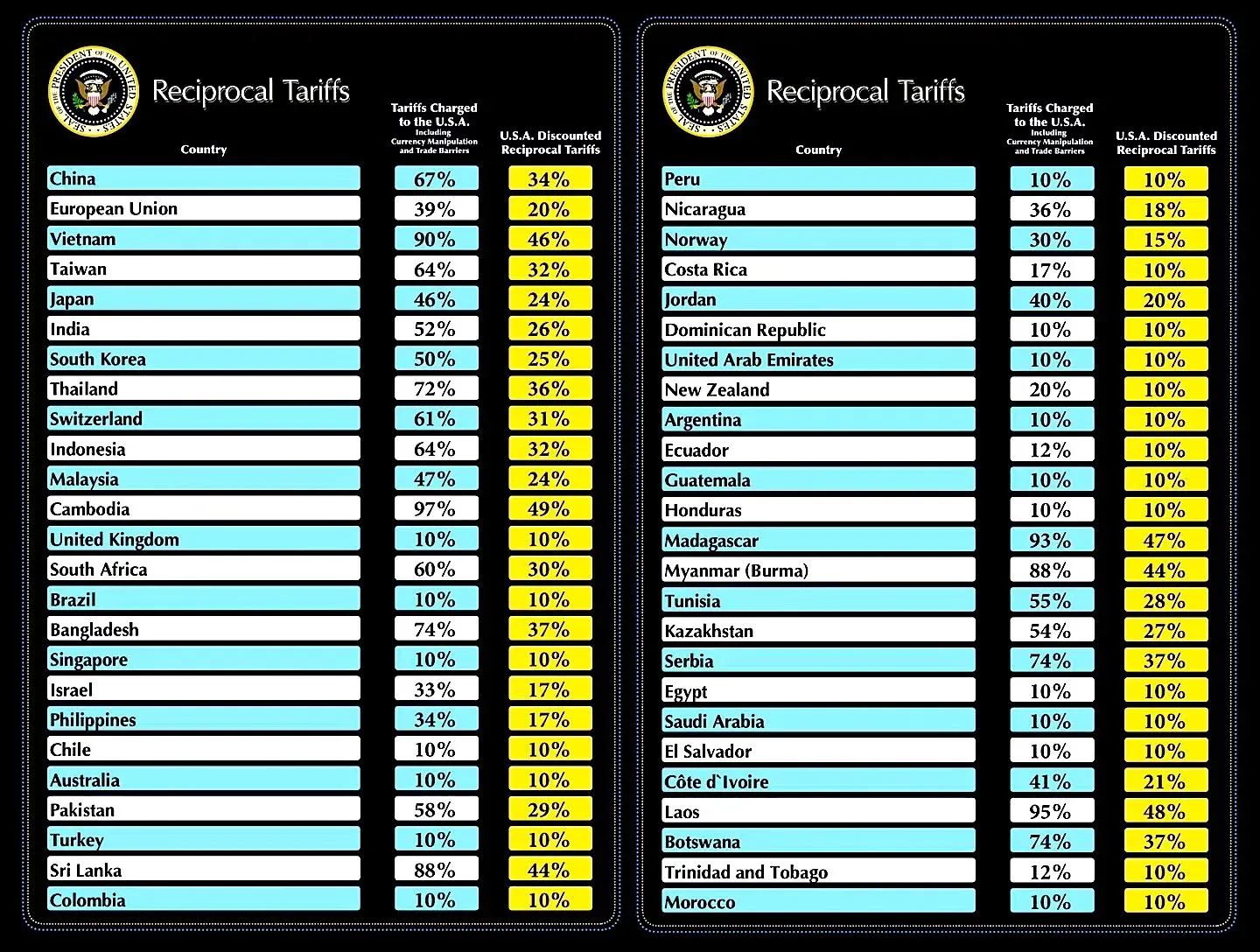Trump Tariffs Impact on Major US Trading Partners Revealed

The impact of Trump tariffs on the global economy has sparked intense debate among economists and policymakers alike. These tariffs, which include a sweeping 10% on all imports, particularly target significant US trading partners, setting the stage for a potential global trade war. As countries like China face a staggering 34% tariff rate in addition to existing duties, the repercussions on American consumers and international relations are profound. The use of reciprocal tariffs creates a complex landscape for trade deficit calculations, as not all countries are treated equally under these policies. This situation places a spotlight on the evolving dynamics between the United States and its global trading partners, which could reshape the future of international commerce.
Analyzing the consequences of President Trump’s import duties reveals a tumultuous shift in trade relations worldwide. These punitive measures, marked by sweeping tariffs imposed on nations like China and the European Union, signal a new era of protectionism that threatens to alter the landscape of international trade. With reciprocal tariffs aimed at countering perceived trade imbalances, the dialogue surrounding trade deficits and economic reciprocity has intensified. Countries entrenched in this rising tension are grappling with the implications of these tariffs on their economies, leaving many to reevaluate their trade strategies moving forward. The escalation in duties not only affects import costs but also ignites discussions on global economic stability and cooperation.
The Impact of Trump Tariffs on Global Trade
The implementation of Trump’s 10% tariffs on all imports has sent shockwaves throughout the global economy, signaling the onset of a potential global trade war. The repercussions of these tariffs are particularly pronounced among major US trading partners, leading to concerns about escalating retaliatory measures and comprehensive economic fallout. As countries respond with their own tariffs, the delicate balance of international trade hangs in the balance, profoundly affecting global supply chains and pricing strategies.
Furthermore, the aggressive tariff strategy under Trump’s administration reflects a shift towards protectionism, redefining the US’s role in global trade dynamics. Countries like China are facing steep tariffs that not only affect their export volumes but also disrupt international business relations, instigating broader economic repercussions. This trade stance could lead to widespread volatility in markets, highlighting the interconnected nature of global trade.
Frequently Asked Questions
What is the impact of Trump tariffs on US trading partners?
Trump tariffs have significantly affected US trading partners, particularly those with large trade surpluses with the United States. Countries like China face high tariffs, with rates as high as 34%, while the European Union faces a 20% tariff. These measures have triggered a global trade war, impacting imports and potentially leading to retaliatory tariffs.
How do Trump tariffs affect the calculation of the trade deficit?
The trade deficit calculation under Trump tariffs has shifted focus. The tariffs are based on a formula that divides a country’s trade deficit by its exports to the US and halves the result. This method disproportionately impacts countries with large trade surpluses, such as China, which saw its reciprocal rate set at 34%, showcasing how Trump’s tariffs intertwine with trade deficit calculations.
What countries are hardest hit by Trump tariffs?
The hardest-hit countries include China, with a 34% tariff, and several Southeast Asian nations like Vietnam, Laos, and Cambodia, facing tariffs as high as 49%. These nations are crucial for US imports of consumer goods and machinery, indicating that Trump’s tariffs have far-reaching implications for global trade and affected economies.
Are reciprocal tariffs under Trump’s administration truly reciprocal?
Although Trump marketed the tariffs as ‘reciprocal,’ they do not account for actual tariffs imposed by US trading partners. Instead, the rates are calculated based on the US trade deficit with each country, disproportionately affecting nations like China and Lesotho, emphasizing that these tariffs may not reflect fair trading practices.
What is the significance of Chinese tariffs in the context of global trade?
The significance of Chinese tariffs, which are the highest under Trump’s administration at 34%, highlights the escalating tensions in global trade relations. These tariffs are a central component of the US-China trade war, impacting international trade dynamics, supply chains, and prices of goods in the US, while also prompting responses from other nations affected by similar tariffs.
How do Trump tariffs affect trade relationships with Mexico and Canada?
While Mexico and Canada are exempt from the new 10% tariffs, they still face a 25% tariff on certain exports due to the US-Mexico-Canada Agreement. This complicates trade relationships as specific products, particularly energy and potash from Canada, face different rates, illustrating the nuanced impact of Trump tariffs on North American trade.
What was the trade deficit with China under Trump’s tariffs?
In 2024, the trade deficit with China reached approximately $295.4 billion, which significantly influenced the reciprocal tariff rate set by the Trump administration at 34%. This staggering deficit underscores the tensions in the US-China trade relationship and highlights the strategic implementation of tariffs as a trade policy.
| Country/Region | Tariff Rate | Impact |
|---|---|---|
| China | 34% | Major supplier with a large trade surplus affecting imports totaling $439.9 billion. |
| European Union | 20% | Significant trading block, accounting for a considerable portion of US imports. |
| Vietnam, Laos, Cambodia | 46%-49% | Heavy reliance on these countries for consumer goods, machinery, and textiles. |
| Mexico | N/A (exempt) | Subject to existing 25% tariff on non-compliant exports under USMCA. |
| Canada | N/A (exempt) | 10% tariff on energy and potash, existing 25% tariff on other exports remains. |
| Lesotho | 50% | Disproportionately high rate due to smaller trade deficit compared to China. |
Summary
The impact of Trump tariffs has been profound and multifaceted, especially for heavily impacted US trading partners like China and the European Union. As these tariffs unfold, they signal the escalation of a trade war that could reshape global trade relations and significantly affect the US economy. The tariffs aim to address trade imbalances but may also have unintended consequences, resulting in increased costs for consumers and industries that rely on imported goods.




